This is a large and very noticeable church on the corner of Holborn Circus, but one that, for most of its life, people would have only seen the church tower poking above the buildings that once surrounded it.
There’s been a church on this site for over 1,000 years, with the first reference — to a wooden church on the hill — dating to either 951 or 959. It survived the Norman Conquest but was handed to St Paul’s Cathedral on the provision that it provided twelve pence per year to Bermondsey Abbey — at a time when twelve pence was a lot of money.
In 1348, John Thavie, a local armourer, “left a considerable Estate towards the support of the fabric forever,” and to this day, that fund is still active and pays for the church’s running costs. On the other side of the street from the church is Thavies Inn, named after the benefactor.
Although the 15th-century stone replacement church survived the Great Fire of London, it was in such a poor condition of repair before the fire that Sir Christopher Wren rebuilt it anyway.
Although the medieval stone tower was kept, it was given a new stone cladding, which, on the one hand, preserved the tower, which is good, but on the other, means it’s hidden from external view, which is a crying shame.
For most of its life, the church had two graveyards on either side of the building, but when the Holborn Viaduct was built, it sliced into the northern churchyard, and in compensation, funding was given to build a new rectory around the southern graveyard.
The church was however gutted during WWII, leaving just the walls and tower standing. Unlike other churches, which were either demolished or rebuilt in a more modern style, it was decided that St Andrew Holborn would be restored in full to its Wren appearance. It reopened in 1961 as a Guild Church, which is one without a parish but looks after the needs of working people in the area.
It was also around this time that the church became visible — the space in front of it used to be covered in buildings — and you can just about see the church tower peeking out in this 1890s photo of Holborn Circus. After the war, the road junction was enlarged, and as part of that, they demolished the buildings in front of the church, opening up the whole space for the first time in its history.
So, what we have is a church that is both modern in build and old in appearance. At least structurally, the church has been pared back internally in recent years and given a more modern appearance in the pews and the lighting. This is a good thing, as the clean look is strikingly modern while still looking undeniably like an old church.
If you visit, you’ll notice two figures on either side of the door, from the Foundling Hospital, which was founded nearby in 1741, but moved to Bloomsbury just a year later.
Inside the main doors is the space leading into the church, and the design for the accessibility slope, added recently by Daewha Kang Design has managed to fit that in so skillfully that it looks like it’s always been there.
Just inside the door is Thomas Coram’s grave, the Foundling Hospital founder, which was moved to the church in 1955. The main church interior is very simple and plain, but not plain cheap, but plain high quality. It has an appearance that a Georgian visitor would have recognised, save for the lack of seating compared to the past.
Part of that is thanks to a recent second restoration of the church carried out between 2016-23.
A green painted ceiling has been whitewashed, and there are now simple dark wood pews and galleries below the white upper floors and ceiling. The floor looks unchanged if you compare it to older photos, but in fact the old black and white tiles were lino floor tiles. The latest restoration replaced them with actual stone.
A very modern intrusion sits to one side, in the form of a sculptural brass screen in the Lady Chapel. Inspired by Wren’s early career in astronomy, the design evolves from a series of nine concentric rings, dissolving into a more organic shape of space towards the perimeter.
In a peculiar way, if you remove the statue of Mary, I’d have almost felt as if I was standing in a mosque of my youth rather than a modern Christian chapel. I liked the effect.
The sculpture now forms the background image on the church’s social media logos.
The huge icon of Jesus on the cross in front of the stained glass by the altar is on a motor so it can be raised or lowered as needed for services.
They can quite literally press a button and raise Jesus to heaven.

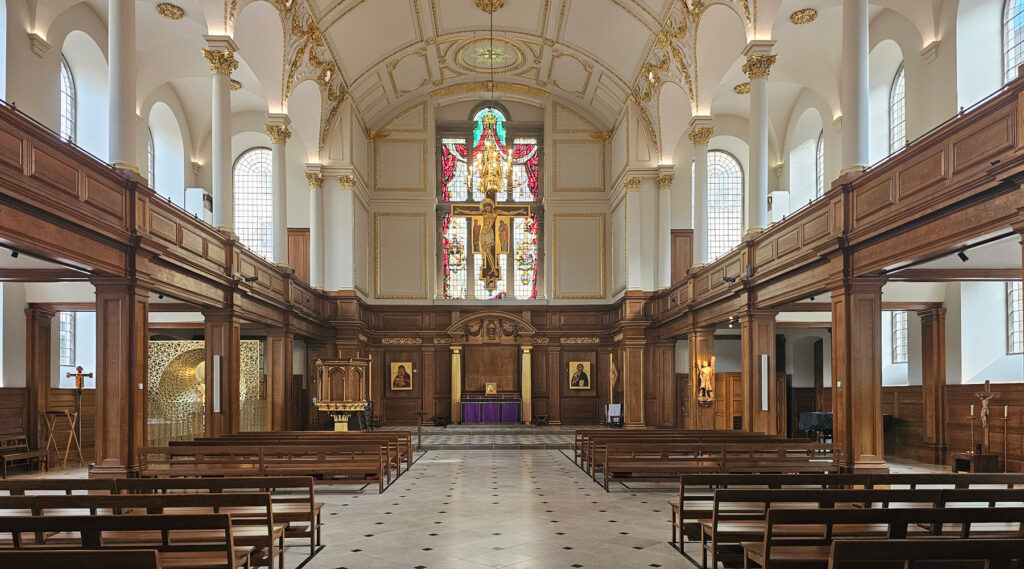
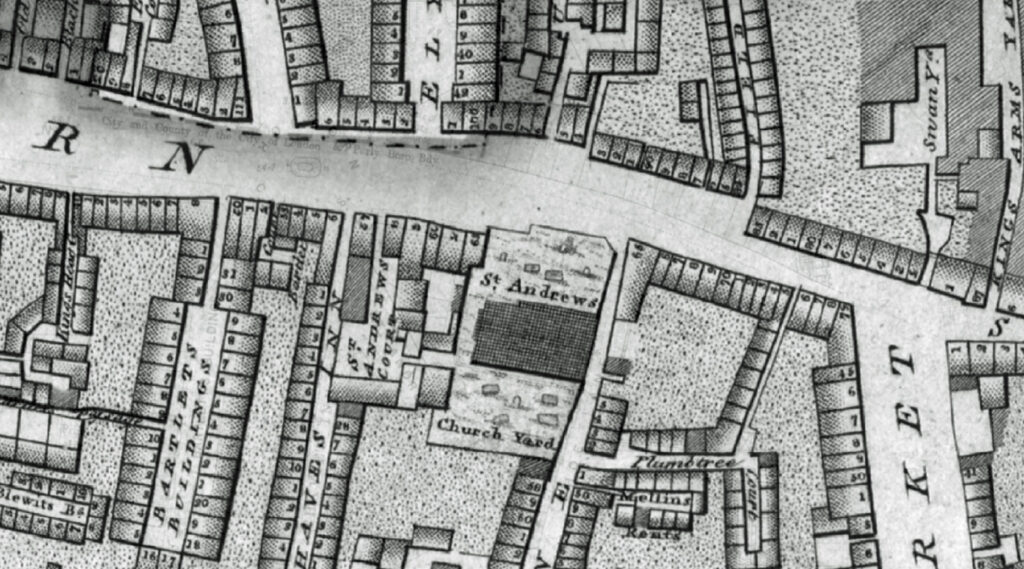
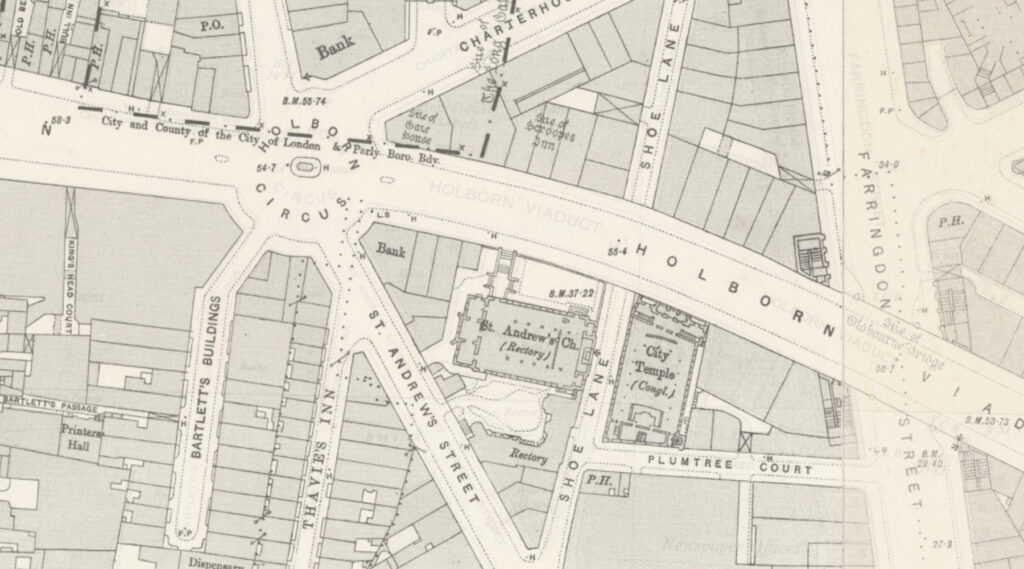
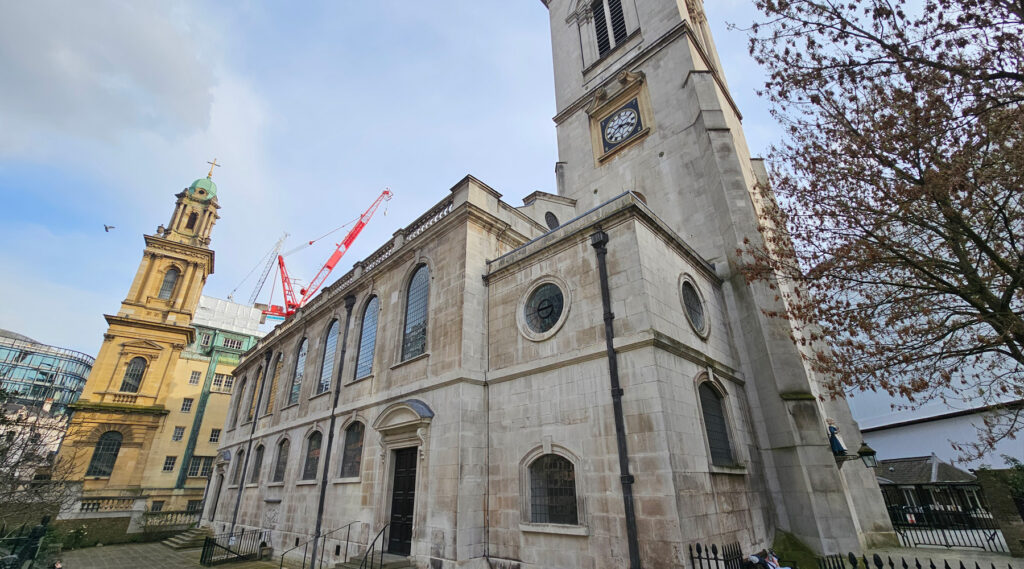
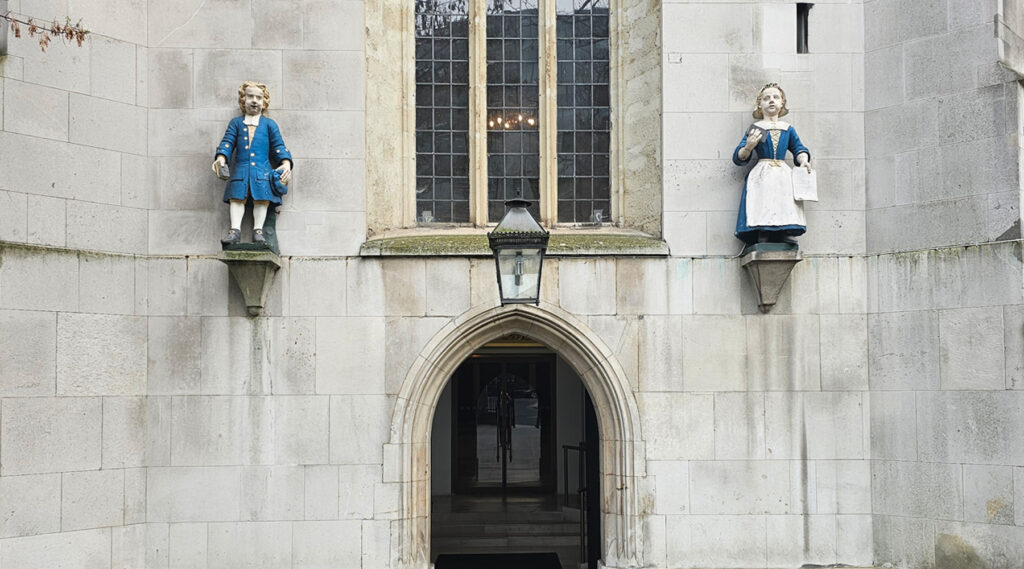
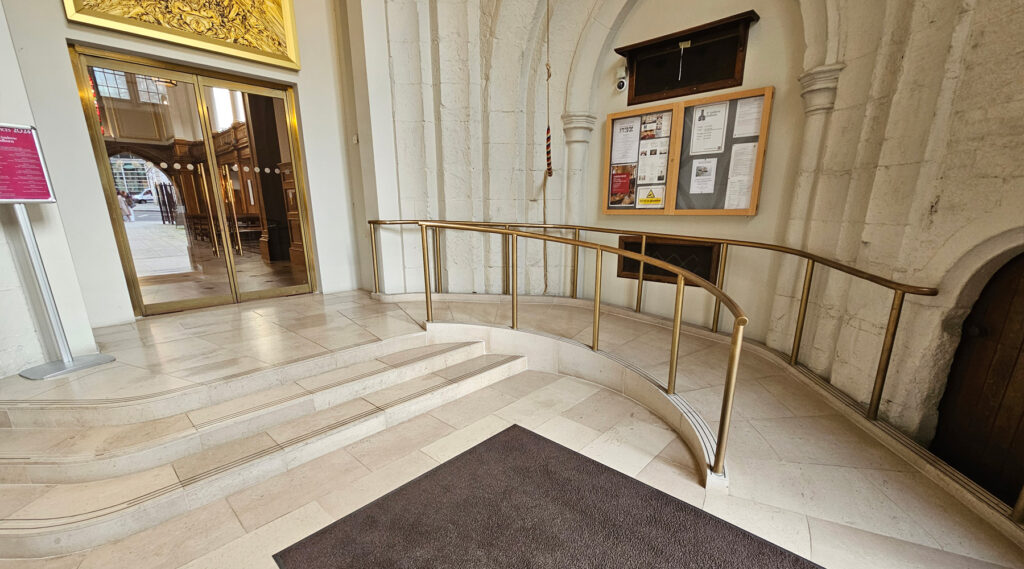
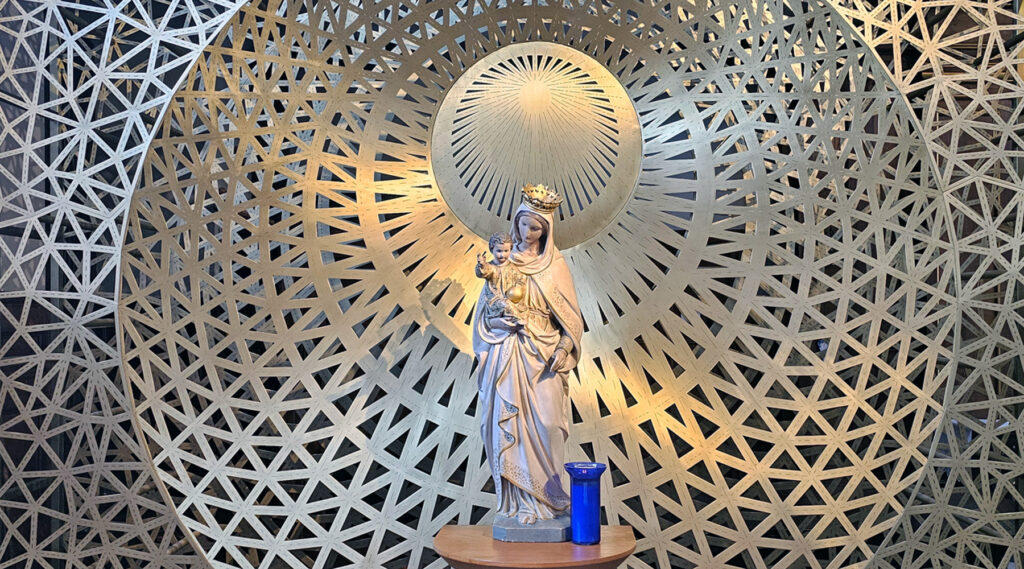
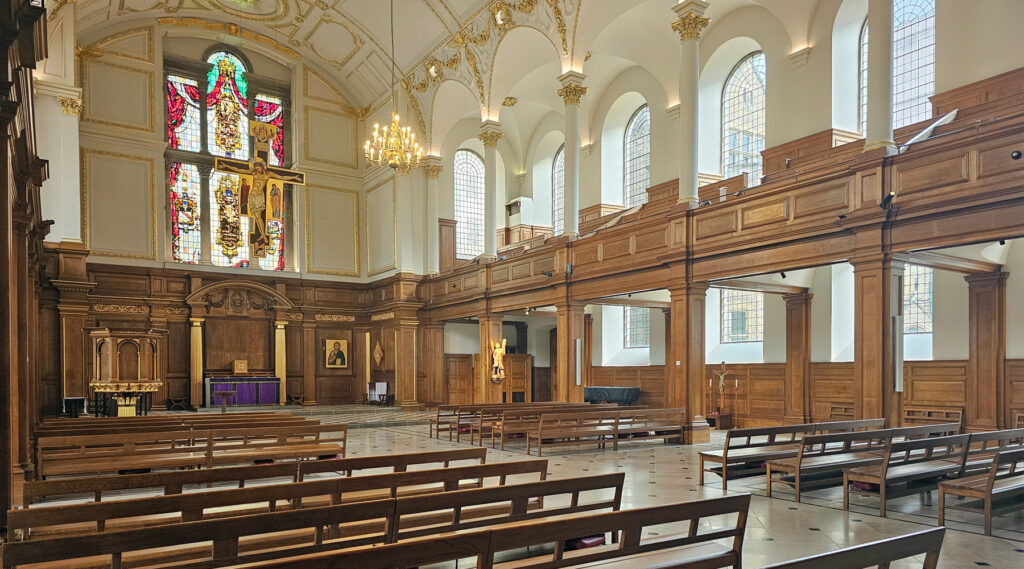






Thanks for a very evocative description to back up the images.
The Marian chapel screen (mosque-like, you say, intriguingly) is an appealing bit of modern church design.
My mother was cook/housekeeper at St Andrew’s Vicarage for about three years in the late 1960’s. It was a great place to live, so central. For my mother Gamages was conveniently situated on the other side of Holborn Circus and I could stroll to Gresham Street where I started work soon after we moved in. Unfortunately I had very little interest in the church or its history then. Much later I became interested in family history and discovered that a 2 x Great Grandmother married her first husband in St Andrews, Holborn in 1844.